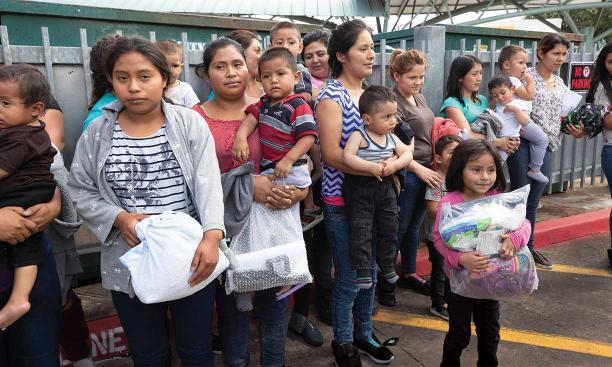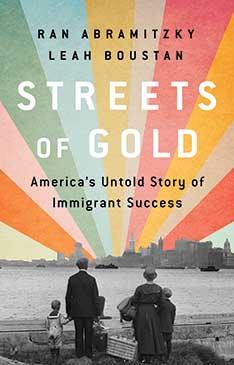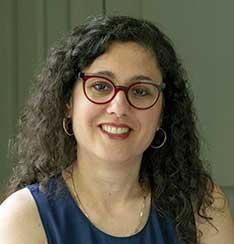
Released in May, the book builds on previously published research and uses data to show that some popular myths about immigration, both in previous generations of immigrants and refugees coming into the country today, are just that: myths. Boustan, an economics professor at Princeton who uses big data and analytics to study the effects of population movement, co-authored the book with Stanford economics professor Ran Abramitzky.
They analyzed millions of immigration records via sources such as U.S. Census data and the North Atlantic Population Project. They pulled so many records that Ancestry.com, which is how they accessed census records, temporarily shut down their account because the company thought someone was stealing the data to repackage and sell themselves.
“By the time you get to the 1940 census, it’s around 100 million people living in the country. We can match up around 25 million of them,” Boustan says, meaning they identified children living at home in 1880 to 1910, then cross-referenced that list with children living at home in 1910 to 1940. The researchers were then able to track the progress of immigrants’ families if they stayed in the U.S., including language spoken, children’s names, and what those children did with their lives and careers. For modern era records, they used children’s earnings.
For example, they found that the nostalgic view — drawn mostly from the descendants of Europeans who migrated to the U.S. before 1920 — that immigrants instantly found opportunity and wealth was largely untrue. Instead, it’s the children of these immigrants who typically reaped the harvest of new opportunities.
They also found that this is still true today, and that children of immigrants from countries such as Mexico, India, and Brazil forge new paths in the U.S. and do so well that they outearn their U.S. counterparts.In the process of this work, Boustan learned more about her own family’s story. On her father’s side, she saw how her great-grandfather immigrated to Chicago and had a small storefront. He managed to survive but “really only tread water” economically, she says. However, his children — with the benefit of going to U.S. schools and learning English — were able to find jobs in sales and bookkeeping and also go to college.
“It’s very similar to what we found on a bigger scale for millions of families,” she says. “For the immigrant generation, they don’t necessarily move up, but their kids do very well.” She also confirmed part of a family story about a name change (which, the book points out, didn’t happen at Ellis Island). Her grandmother, who was born with the name Rose, changed it to Roslyn after a teacher told her “Rose” was too ethnic. Boustan discovered the discrepancy in census records taken when her grandmother was 2 and 12 years old.
Boustan first came to Princeton as an undergraduate and planned to study public policy, but she was inspired after a class with economics professor Henry Farber to pursue this type of work. In that class she learned “how to use statistics for economic applications and using real data,” she says, like how many cars got off the New Jersey Turnpike at each exit. While at Princeton she served as Nassau Weekly’s editor-in-chief, worked for The American Prospect after graduation, and went on to earn her Ph.D. in economics from Harvard.
She didn’t anticipate that this research would become so relevant to discussions about immigration when she and Abramitzky first met at a conference. By 2013, when their research was ramping up, she thought it would be relevant because, by happenstance of timing, “there was potentially going to be comprehensive immigration reform. It didn’t come to pass but people said ‘that’s politics’ and we’ll maybe get it done next time,” she says.
They were in the middle of studying the effects of the 1921 and 1924 country-of-origin quotas, which favored immigration from northwest Europe and cut spots for legal immigration entry from 1 million down to 150,000 a year, when the Trump campaign began picking up steam and rallying behind further tightening of immigration, followed by administration policies like the 2017 “Muslim Ban” and building of a border wall between the U.S. and Mexico. It pushed their work further into the public view.
During this time, Boustan had also been connecting with journalists to promote this research — and not just to eventually sell books.
She knew this work could inform immigration reforms by showing the benefits of having more open immigration policies, at a time when 75 percent of Americans think immigration is good for the country, according to a 2018 Gallup Poll. Deferred Action for Childhood Arrivals (DACA), which protects some undocumented children brought to the U.S., is still granted by executive order (and can be revoked by the next president), and only 85,000 H-1B visas for specialized workers and graduates of U.S. graduate schools are granted per year — the same number as in 2004, even though the U.S. population has grown since then.
“Because of COVID, immigration levels are lower than they’ve ever been, and we’ve seen implications for our own local communities,” she says. “Maybe there’s going to be a will there to try to make some change, but there’s a lot of other things going on in the world right now.”


